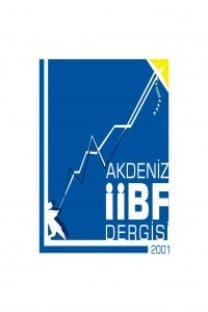TÜRK REEL SEKTÖRÜ İÇİN PARAMETRİK OLMAYAN BİR PERFORMANS ANALİZİ : “GEM-FLEX” YAKLAŞIMI
Son yıllarda ülkelerin makro ekonomik performansları performansı tek göstergede birleştirebilen sentetik performans göstergeleri ile değerlendirilmektedir. Matematiksel programlama tabanlı sentetik performans ölçütleri; Melyn ve Moesen(1991)’in LIMEP, Lovell ve Pastor(1995)’in GEM ve Cherchye(2001)’in geliştirdiği GEM-flex’dir. Bu çalışmanın amacı, Türkiye Cumhuriyet Merkez Bankası bünyesindeki 13 alt sektörün mali rasyolarının 1996-2006 döneminde GEM-flex yöntemi kullanılarak değerlendirilmesi ve GEM-flex yönteminin Türk reel sektörüne uygulanabilirliğinin incelenmesidir. Analizlerde, Eğitim, Sağlık ve Sosyal Hizmetler ile Elektrik, Gaz ve Su Kaynakları Sektörlerinin diğer sektörlere göre yüksek GEM-flex skoruna sahip olduğu belirlenmiştir. Tüm sektörler ortalamada ~%62,2 düzeyinde performans ölçütüne ve ~%16,7 seviyelerinde politika ağırlıklarına sahiptir. 1999 ve 2001 yıllarındaki finansal krizler nedeniyle çoğu sektörün performansının düştüğü gözlemlenmiştir. Performanslar 2004 yılına kadar önemli seviyede yükselmiş, sonrasında bir miktar gerilemiştir. Sonuçta, GEM-flex yönteminin Türk reel sektörü için karşılaştırmalı performans analizlerinin yapılmasında yatırımcılar ve yöneticiler için önemli araç olduğu değerlendirilmektedir
A NON-PARAMETRIC PERFORMANCE EVALUATION FOR TURKISH REAL SECTOR : “GEM-FLEX” APPROACH
Within the near past, macro economic performance of the countries has evaluated by the synthetic performance indicators which has the ability to combine performance in one indicator. Mathematical programming based synthetic performance indicators are LIMEP by Melyn and Moesen(1991), GEM by Lovell and Pastor (1995) and GEM-flex by Cherchye(2001). The goal of this study is to evaluate the financial ratios of the 13 sub-sector within Central Bank of the Republic of Turkey in 1996-2006 period by using GEM-flex method and investigate the applicability of GEM-flex method onto Turkish real sector. Results of the analyses revealed that Education, Health-Social Services and Electric-Gas-Water Sources sectors has superiority on other sectors with regard to performance. All the sectors has ~62,2% GEM-flex score and ~16.7% policy weights in average. As a consequence of the financial crisis in Turkey on 1999 and 2001, most of the sectors reveal a significant decrease in GEM-flex performances in those years. However, considerable progress has been realized in the performances until year 2004, afterwards a minor recession has been recorded. Overall, according to our evaluations, the GEM-flex approach would be a valuable tool for investors and the managers so as to make comparative analyses in Turkish real sector
Keywords:
Synthetic Performace Indicators, GEM-flex Data Envelopment Analysis, Mathematical Programming.,
- ISSN: 1302-9975
- Başlangıç: 2001
- Yayıncı: Akdeniz Üniversitesi
Sayıdaki Diğer Makaleler
Turhan KORKMAZ, Selin ZAMAN, Emrah İsmail ÇEVİK
NORMATİF KURUMSAL MEKANİZMANIN İŞLETME STRATEJİSİ İLE İKY MODELİ ARASINDAKİ İLİŞKİ ÜZERİNE ETKİSİ
DEVRİM ERSEZER’İN DOKTORA TEZ ÖNERİSİ
TÜRK REEL SEKTÖRÜ İÇİN PARAMETRİK OLMAYAN BİR PERFORMANS ANALİZİ : “GEM-FLEX” YAKLAŞIMI
İKİ TARAFLI MÜZAKERELERDE GÜÇ DENGESİZLİĞİ VE ÇERÇEVELEMENİN ETKİLERİ
Ali Fehmi ÜNAL, Gül Gökay EMEL
KÜRESEL KAMUSAL BİR MAL: FİNANSAL İSTİKRAR
